Pricing Change
New pricing for orders of material from this site will come into place shortly. Charges for supply of digital images, digitisation on demand, prints and licensing will be altered.
Upcoming Maintenance
Please be advised that this website will undergo scheduled maintenance on the following dates:
Thursday, 9 January: 11:00 AM - 3:00 PM
Thursday, 23 January: 11:00 AM - 3:00 PM
Thursday, 30 January: 11:00 AM - 3:00 PM
During these times, some functionality such as image purchasing may be temporarily unavailable. We apologise for any inconvenience this may cause.
25/04/2014
The year 2014 sees the 700th anniversary of the Battle of Bannockburn, in which the army of Robert I of Scotland defeated that of Edward II of England. The battle marked a major turning point in the long, drawn-out struggle of the Wars of Independence.
The Wars have had a lasting influence upon all the nations of the United Kingdom and upon the national story. Each age has seen fit to commemorate the events in its own way: through the perpetuation of the genuine historical associations of buildings and places and also through the endowment of others with improbable or fanciful traditions. Where past generations allowed its historic buildings to decay and disappear, later generations began to value and actively preserve these for their associations. Where an event lacked a tangible reminder, as at Kinghorn where Alexander III was killed in a riding accident, a commemorative monument would be erected to act as a focus. The Wars of Independence predate the fashion for accurate portraiture: the weathered, generic military effigy of Sir James Douglas is one of the few to survive in Scotland. Later centuries saw a need and supplied it by a crowd of images of its historic heroes, William Wallace and Robert the Bruce, each depicted according to contemporary taste and imagination. The opening of the new heritage centre at Bannockburn takes this into a new dimension, through the use of three-dimensional, digital technology.
RCAHMS Collections hold many images of these buildings and locations from battlefields, castles and churches, to the many commemorative monuments erected in later years. This gallery highlights a selection of these, including antiquarian sketches, photographic and drawn surveys, and architectural designs.
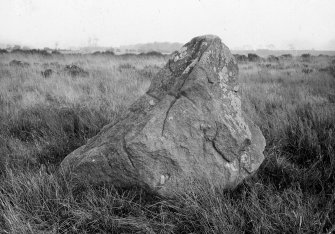
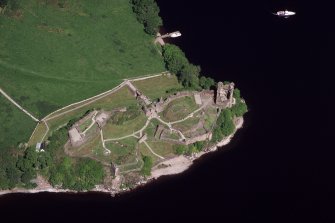
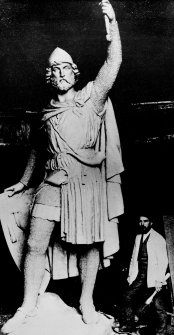
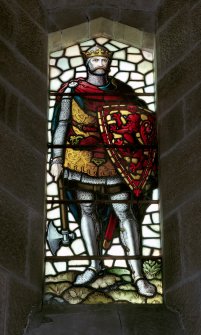




SC 922937
Interior of Wallace Monument. 2nd. floor, exhibition room, detail of stained glass window
© Crown Copyright: HES
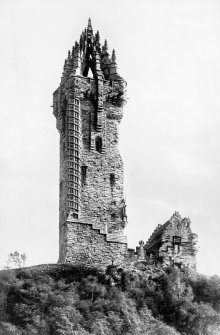

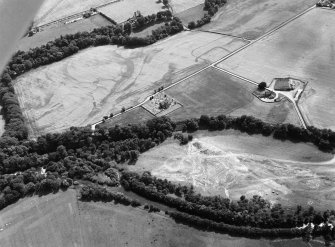




SC 1013784
Oblique aerial view centred on the cropmarks of the Roman Temporary Camp, ring ditch and pits with Strathcathro Parish Church adjacent, looking to the S.
© Ian Ralston. Courtesy of HES

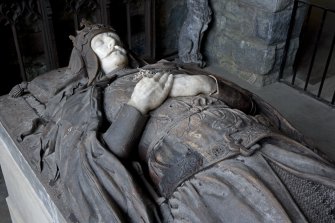
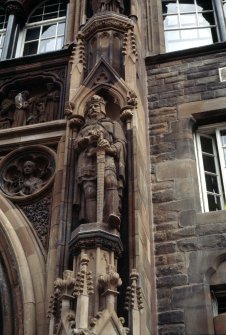
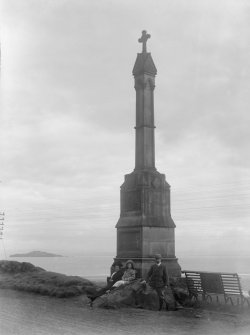



SC 1098074
View of the statue of Robert the Bruce located on the exterior of the National Portrait Gallery, Queen Street.
© Courtesy of HES (William McKelvie Collection)

SC 1104632
View of Alexander III Monument, Kingswoodend, from North West
© Courtesy of HES (Francis M Chrystal Collection)

DP 040241
Oblique aerial view centred on the airfield with the lighthouse adjacent, taken from the W.
© Crown Copyright: HES

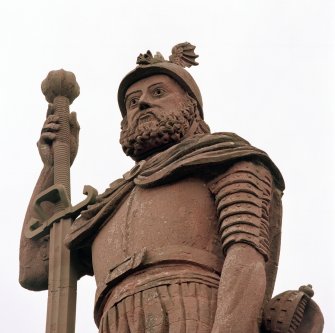
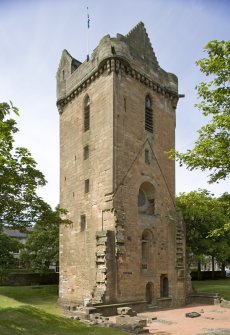
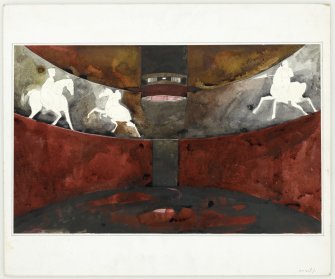

DP 043347
Oblique aerial view centred on Dunfermline Abbey with the Abbey Precinct adjacent, taken from the SSE.
© Crown Copyright: HES



DP 064424
Alterations for the National Trust for Scotland. Interior perspective elevations of auditoria. Press cuttings and letter relating to alterations.
© Courtesy of HES. Papers of John L Paterson, architect, Edinburgh, Scotland
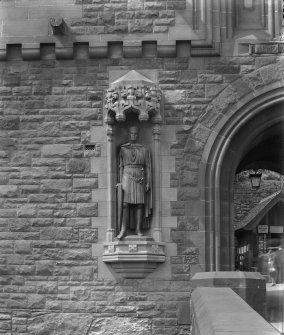
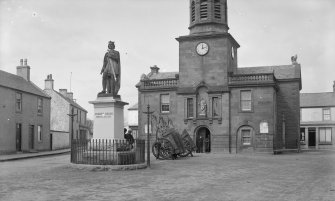
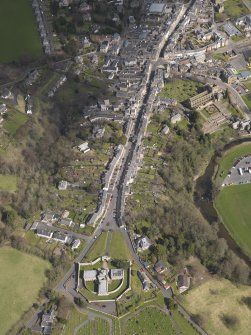
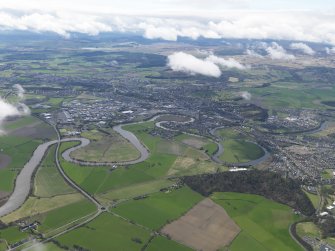

SC 1167311
Detail of memorial to Robert Bruce on Gate House
© Courtesy of HES (Scottish Colorfoto Collection)

SC 1168708
View from S of town hall and statue of Robert Bruce, High Street, Lochmaber. Large carts are balanced end on behind the statue.
© Courtesy of HES (William Notman Collection)


DP 078996
General oblique aerial view of the city centred on the Stirling Castle, taken from the NE.
© Crown Copyright: HES
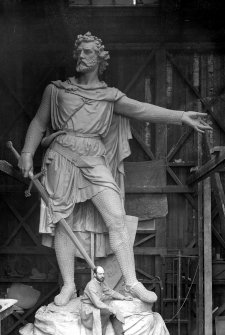
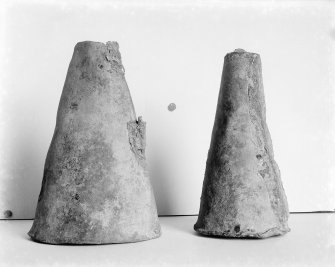
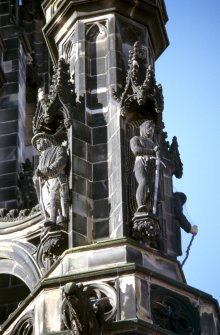
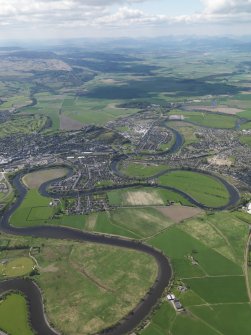

SC 1207608
View of the Wallace Statue under construction with W Grant Stevenson sitting at the base, Aberdeen.
© Courtesy of HES (Scottish Colorfoto Collection)


SC 1212613
View of statues of Robert the Bruce (right) and Old Mortality (left), on upper tier of NE buttress.
© Public Monuments and Sculpture Association (PMSA), Edinburgh Regional Archive. Courtesy of HES

DP 089480
General oblique aerial view of the city centred on the castle, taken from the NE.
© Crown Copyright: HES
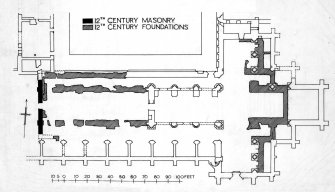
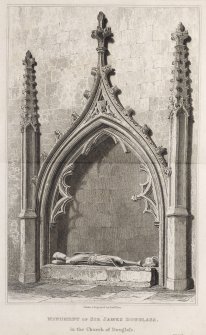
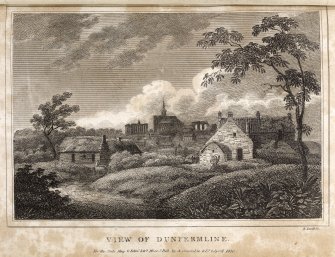
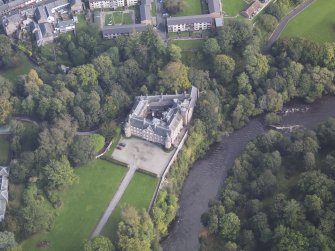


DP 094355
Engraving of tomb of Sir James Douglas. Titled: 'Monument of Sir James Douglass in the church of Douglass. Drawn and engraved by Edwd. Blore. Proof.'
© Courtesy of HES. Illustration in Views in Scotland

DP 094376
Engraving of Dunfermline Abbey on skyline with scattered cottages in foreground. Titled: ' View of Dunfermline for the Scots. Mag. & Edinr Lity Misc. pub by A. Constable & Co., 2 April 1810. R. Scott sculpt.'
© Courtesy of HES. Illustration in Views in Scotland

DP 097241
General oblique aerial view of Brechin Castle estate, centred on Brechin Castle, taken from the W.
© Crown Copyright: HES
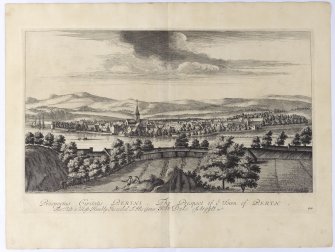
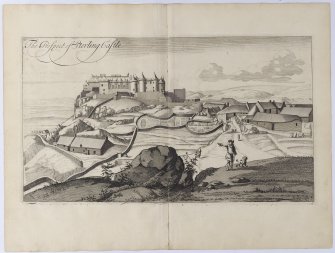
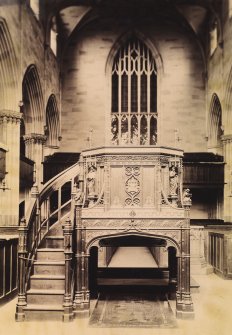
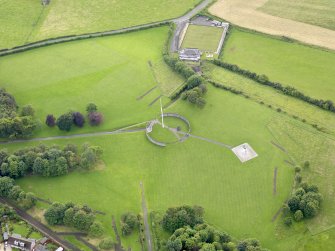

DP 102160
Pl.44 Perth. Copy of copper plate engraving titled 'Prospectus Civitatis Perthi The prospect of ye town of Perth. This plate is most humbly inscribed to His Grace John, Duke of Argyle etc.'
© Courtesy of HES. Illustration from Theatrum Scotiae by J Sleezer

DP 102163
View of Stirling Castle. Copy of copper plate engraving titled 'The prospect of Sterling Castle.'
© Courtesy of HES. Illustration from Theatrum Scotiae by J Sleezer

DP 106930
Interior view of Dunfermline Abbey. Titled 'Bruces's Grave Dunfermline Abbey' PHOTOGRAPH ALBUM NO:11 KIRSTY'S BANFF ALBUM

DP 107406
Oblique aerial view of Bannockburn Heritage Centre, taken from the NNE.
© Crown Copyright: HES
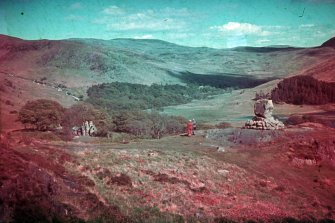
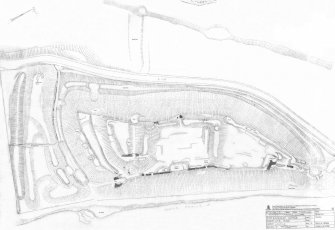

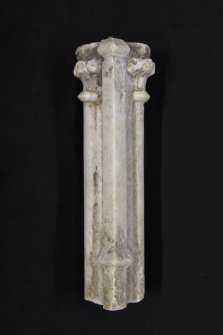
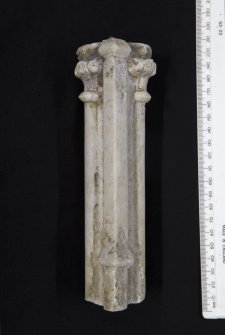
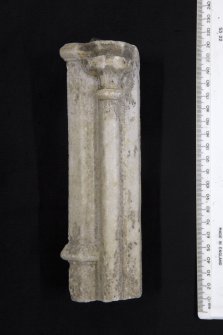
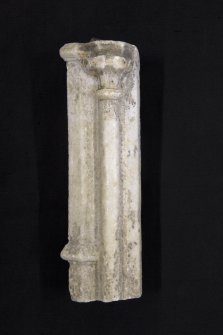
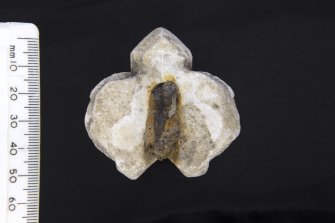




DP 171430
Top view of composite pillar from corner of tombchest, showing iron pin (with scale)
© Crown Copyright: HES

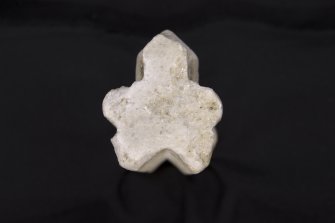
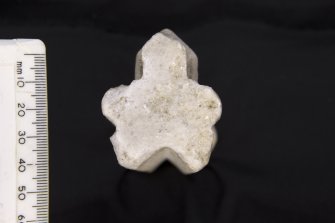
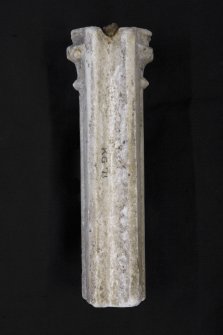

DP 171431
Top view of composite pillar from corner of tombchest, showing iron pin
© Crown Copyright: HES

DP 171432
View from below of composite pillar from corner of tombchest, showing fracture
© Crown Copyright: HES

DP 171433
View from below of composite pillar from corner of tombchest, showing fracture (with scale)
© Crown Copyright: HES

DP 171434
View of reverse of composite pillar from corner of tombchest, showing rebate
© Crown Copyright: HES
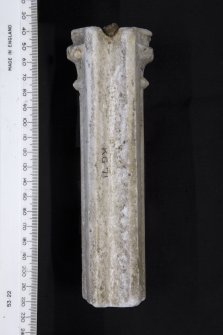
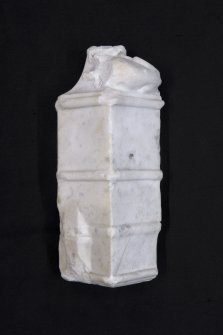
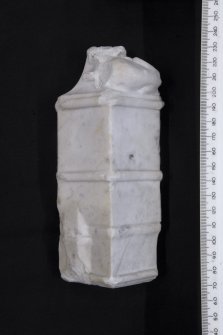
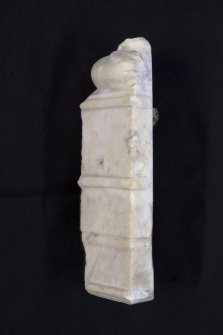
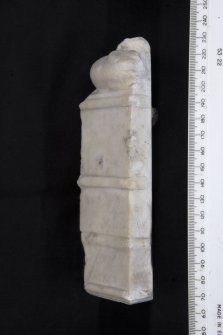
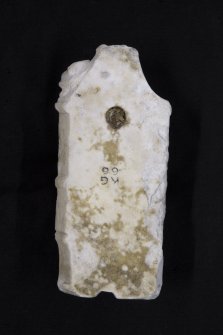
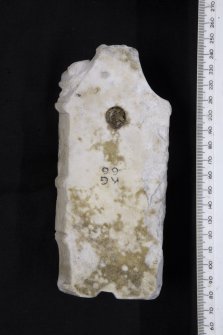
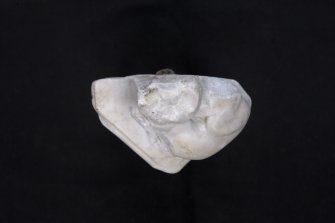


DP 171440
View of reverse of corbel from the tombchest canopy, showing iron pin
© Crown Copyright: HES

DP 171441
View of reverse of corbel from the tombchest canopy, showing iron pin (with scale)
© Crown Copyright: HES

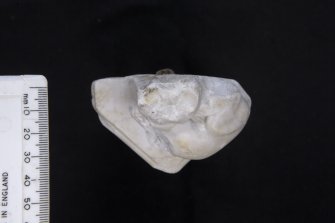
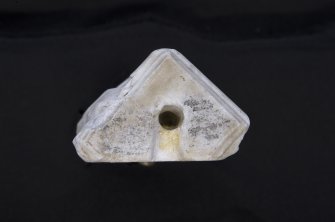
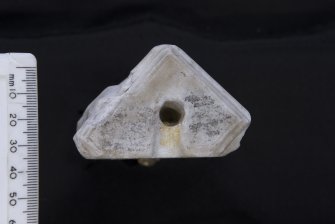
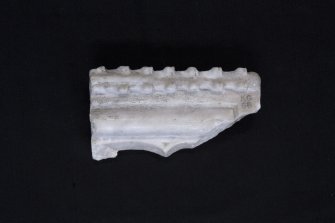


DP 171445
View of upper surface of corbel from the tombchest canopy, showing pin socket
© Crown Copyright: HES

DP 171446
View of upper surface of corbel from the tombchest canopy, showing pin socket (with scale)
© Crown Copyright: HES

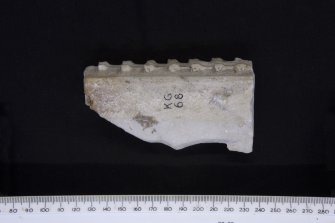
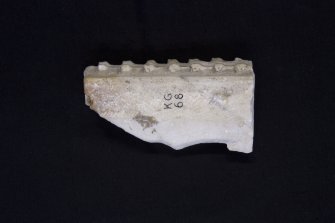
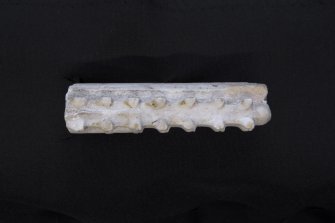
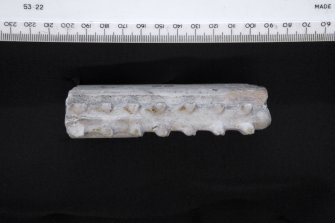


DP 171450
Detail of reverse of fragment of finial and trefoil from tombchest (with scale)
© Crown Copyright: HES


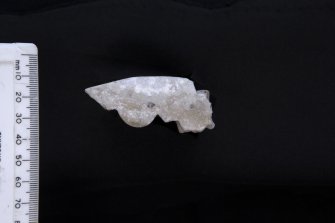
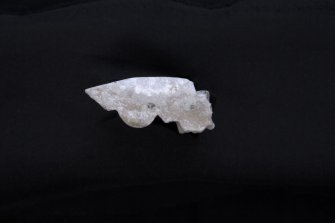
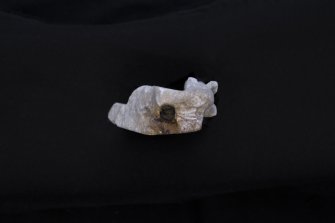
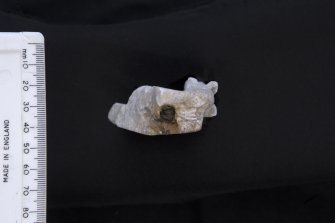

DP 171453
Detail of lower surface of finial and trefoil fragment, showing fracture (with scale)
© Crown Copyright: HES

DP 171454
Detail of lower surface of finial and trefoil fragment, showing fracture
© Crown Copyright: HES

DP 171455
Detail of upper surface of finial and trefoil fragment, showing socket for iron pin
© Crown Copyright: HES

DP 171456
Detail of upper surface of finial and trefoil fragment, showing socket for iron pin (with scale)
© Crown Copyright: HES
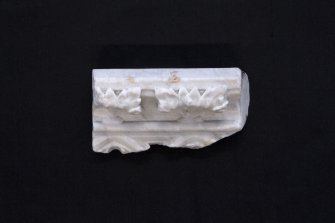
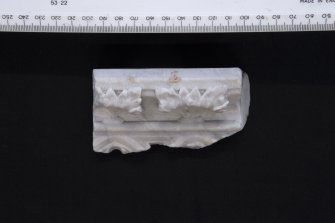
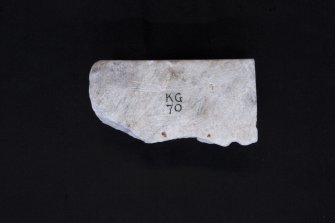
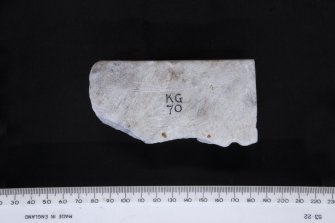
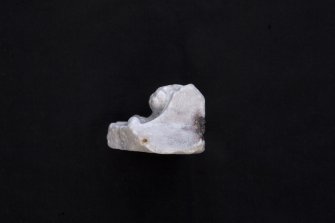
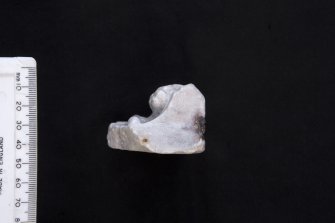
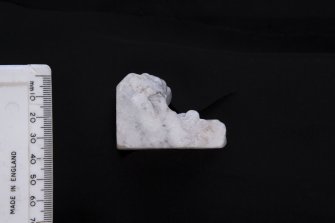
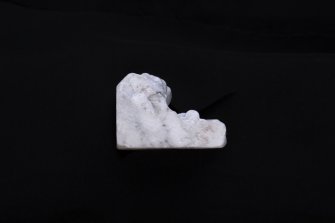




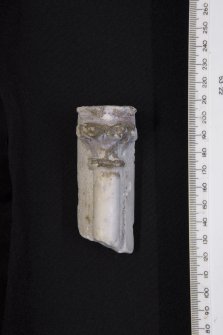
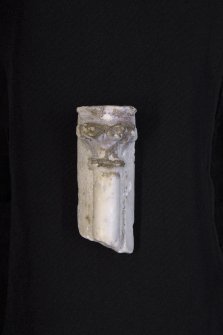
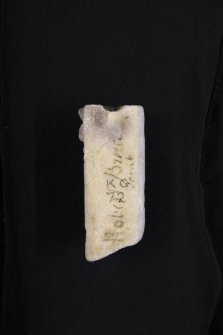
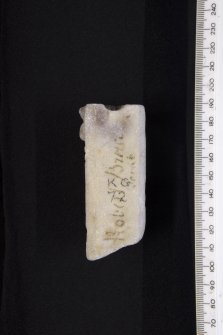

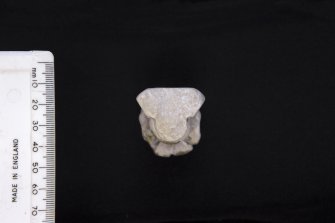




DP 171470
Detail of lower surface of colonette from tombchest arcade (with scale)
© Crown Copyright: HES

DP 171471
Fragment of gablet from tombchest canopy, bearing crocket and edge of roundel
© Crown Copyright: HES

DP 171472
Fragment of gablet from tombchest canopy, bearing crocket and edge of roundel (with scale)
© Crown Copyright: HES
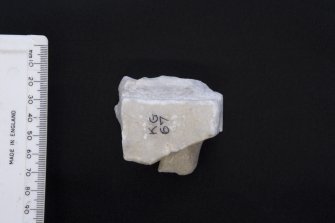
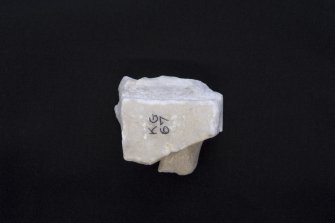
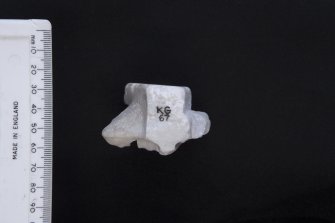
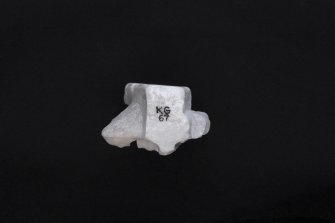





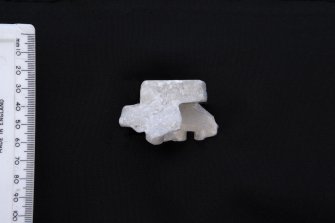
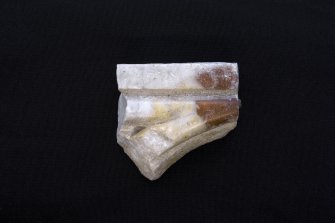

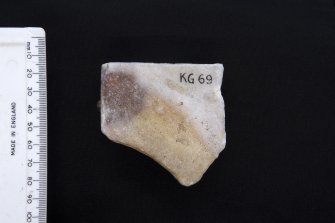
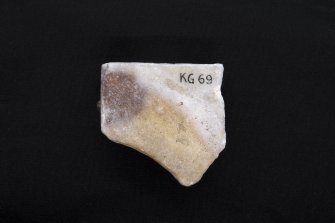
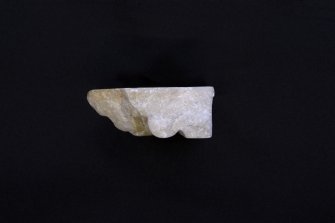
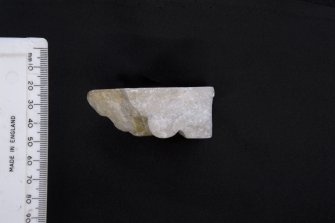




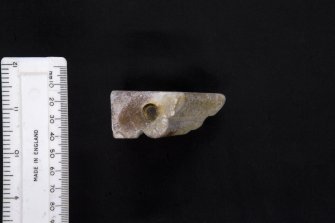
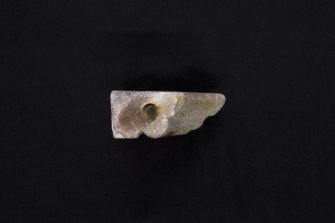
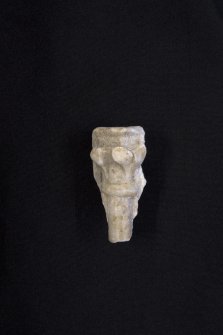
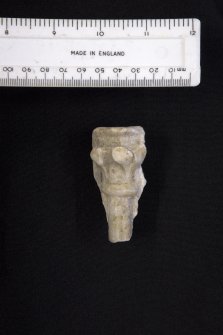

DP 171485
Edge of apex of tombchest arcade, showing remains of iron pin (with scale)
© Crown Copyright: HES



DP 171488
Fragment of capital from composite corner pillar of tombchest (with scale)
© Crown Copyright: HES
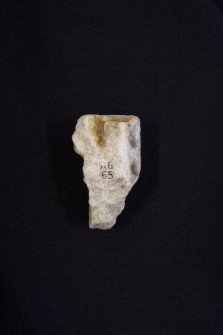
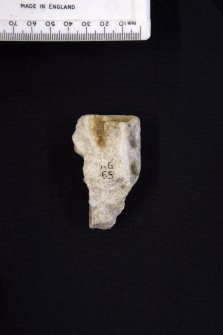
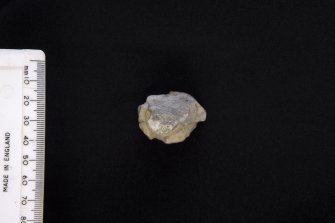
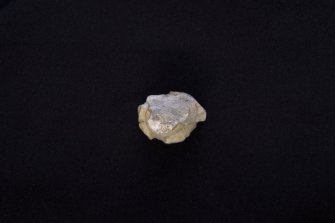

DP 171489
Reverse of fragment of capital from composite corner pillar of tombchest
© Crown Copyright: HES

DP 171490
Reverse of fragment of capital from composite corner pillar of tombchest (with scale)
© Crown Copyright: HES

DP 171491
Lower surface of fragment of capital from composite corner pillar of tombchest (with scale)
© Crown Copyright: HES

DP 171492
Lower surface of fragment of capital from composite corner pillar of tombchest
© Crown Copyright: HES

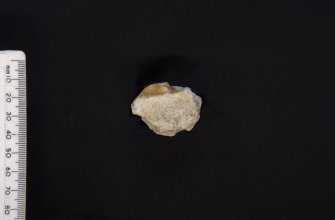
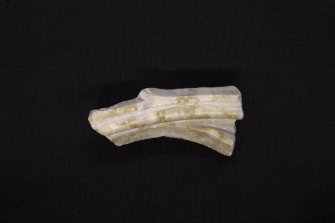
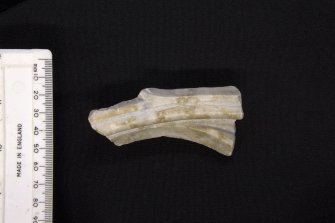

DP 171493
Lower surface of fragment of capital from composite corner pillar of tombchest
© Crown Copyright: HES

DP 171494
Lower surface of fragment of capital from composite corner pillar of tombchest (with scale)
© Crown Copyright: HES




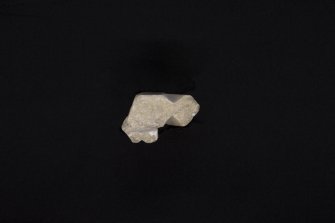
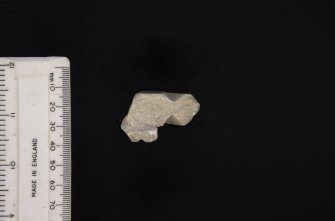
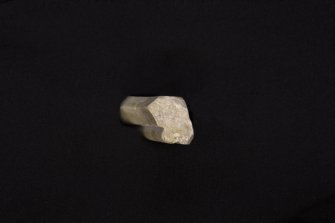
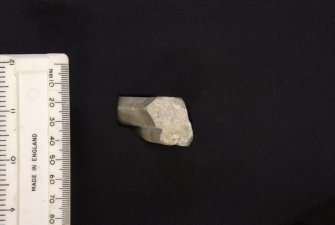
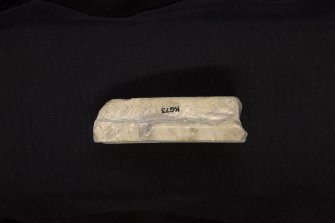
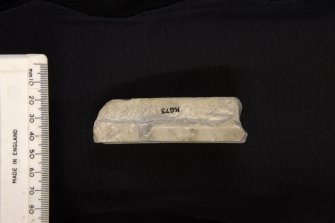

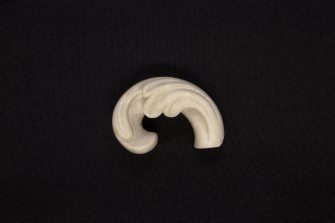
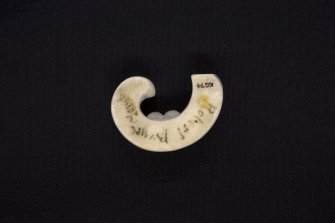
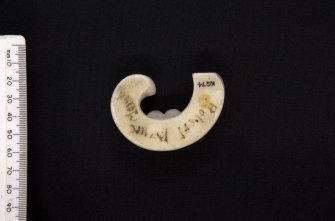

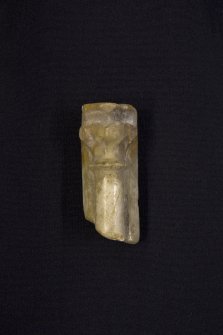
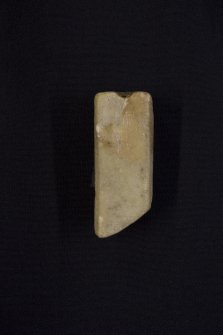
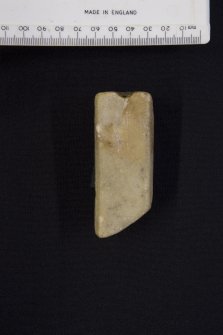
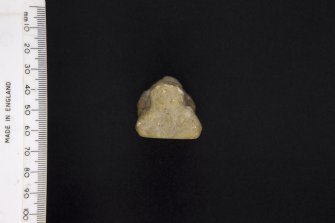
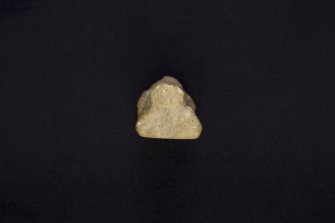
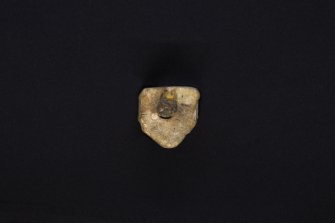
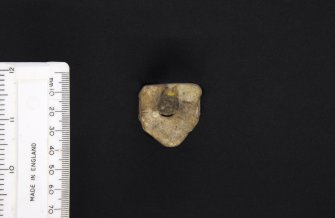

DP 171513
Detail of lower surface of colonette from tombchest arcade (with scale)
© Crown Copyright: HES



DP 171516
Detail of upper surface of colonette from tombchest arcade (with scale)
© Crown Copyright: HES
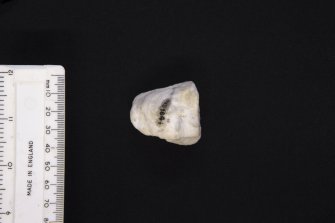
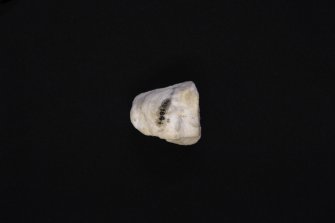

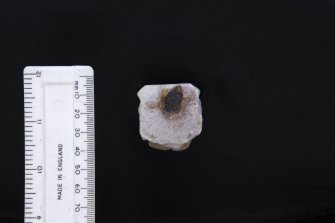
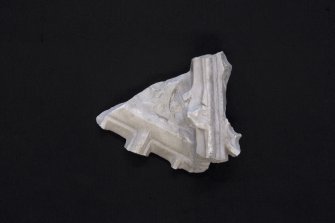
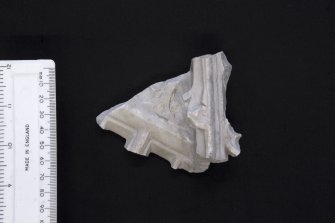
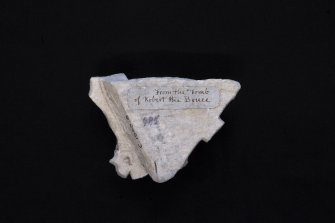
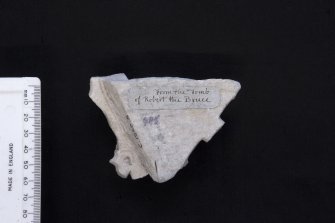

DP 171521
Fragment of gablet, bearing lower edge of arcading, stump of a crocket, and part of roundel.
© Crown Copyright: HES

DP 171522
Fragment of gablet, bearing lower edge of arcading, stump of a crocket, and part of roundel (with scale)
© Crown Copyright: HES

DP 171523
Reverse of fragment of gablet, bearing lower edge of arcading and part of roundel.
© Crown Copyright: HES

DP 171524
Reverse of fragment of gablet, bearing lower edge of arcading and part of roundel (with scale)
© Crown Copyright: HES
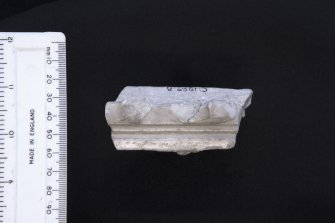
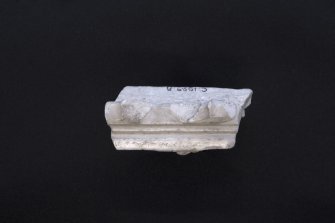
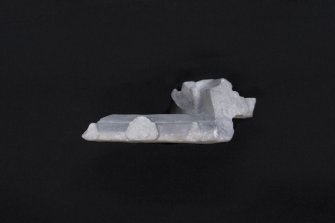
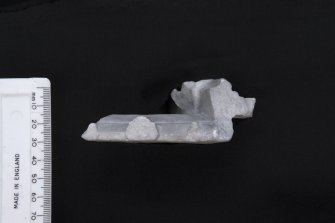




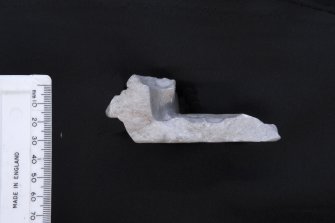
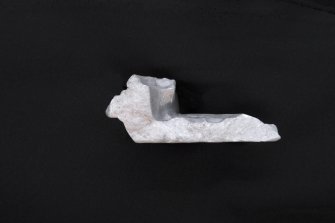
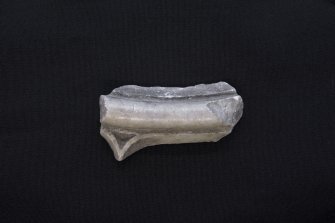
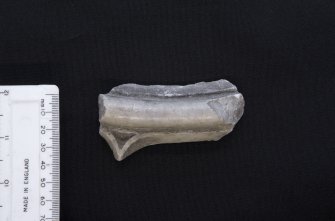

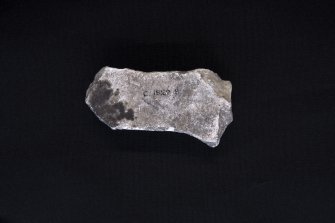
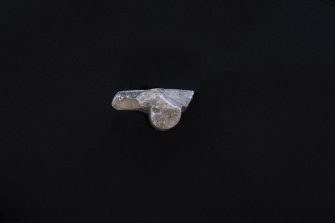
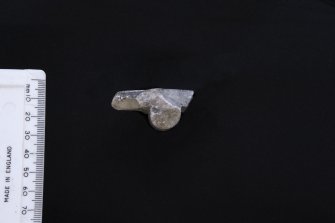

DP 171533
Reverse of fragment of cusped arch from tombchest arcade (with scale)
© Crown Copyright: HES



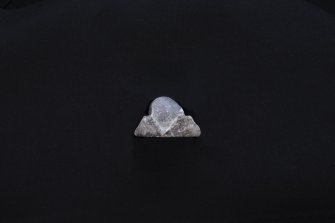
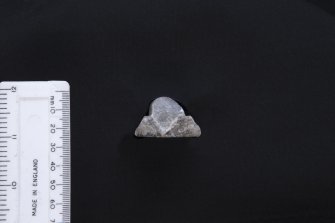
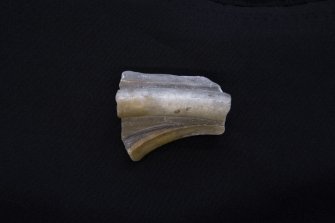
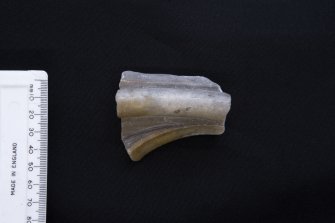

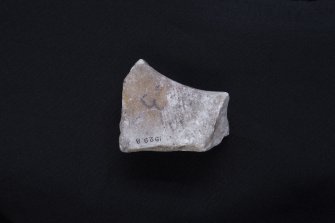
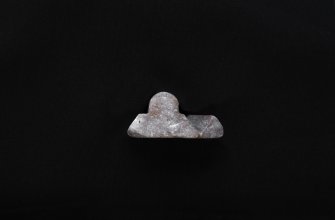
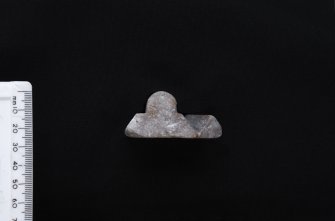

DP 171541
Reverse of fragment of cusped arch from tombchest arcade (with scale)
© Crown Copyright: HES



DP 171544
Section of fragment of cusped arch from tombchest arcade (with scale)
© Crown Copyright: HES
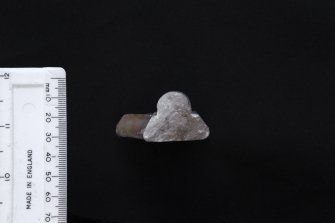
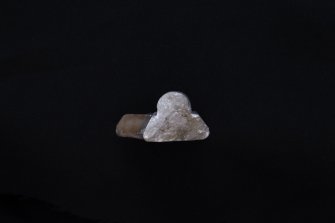
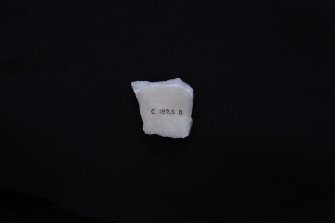
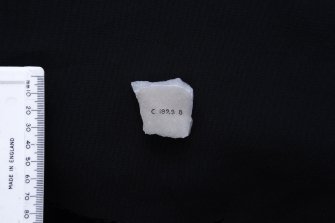
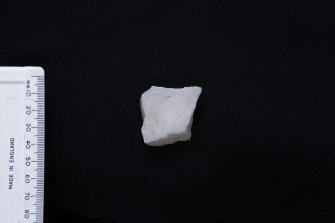
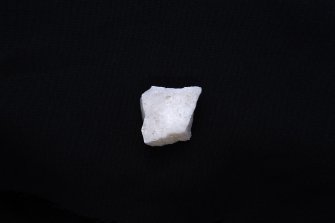
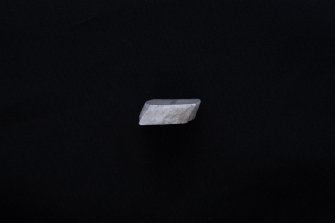
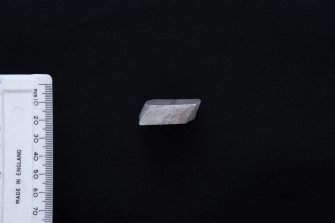




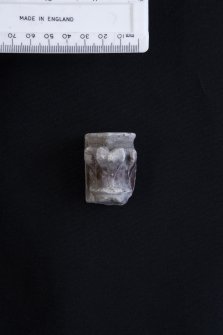
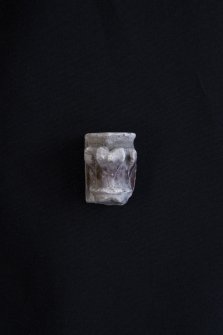

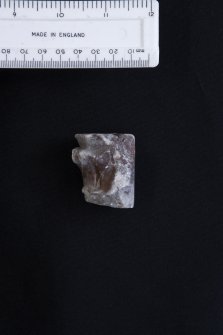
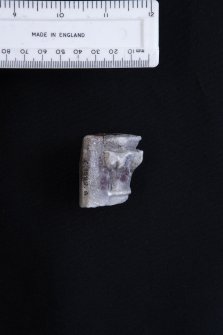
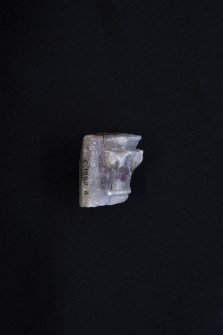
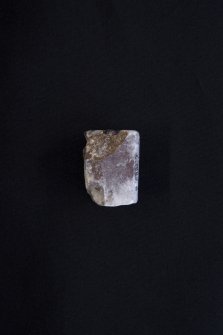
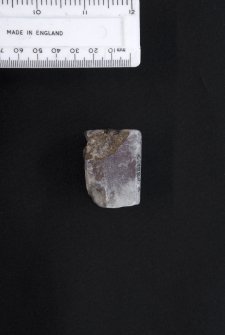




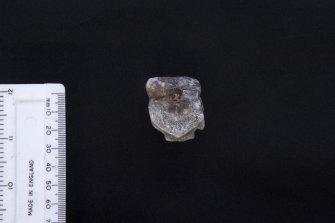
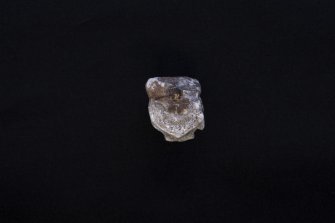
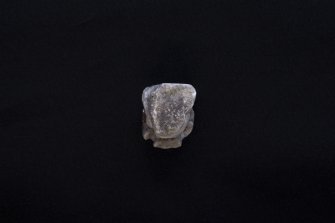
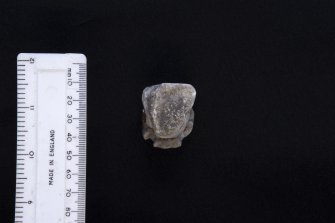

DP 171561
View of upper face of capital of colonette from tombchest arcade (with scale)
© Crown Copyright: HES

DP 171562
View of upper face of capital of colonette from tombchest arcade (with scale)
© Crown Copyright: HES


DP 171564
View of upper face of capital of colonette from tombchest arcade (with scale)
© Crown Copyright: HES
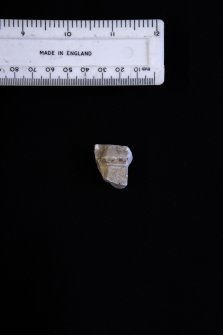
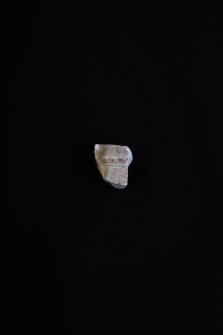
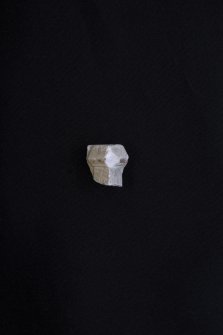
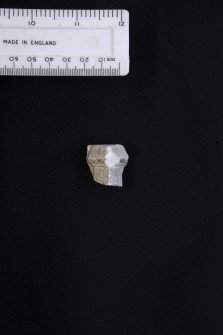

DP 171565
Detail of fragment of composite pillar from corner of tombchest (with scale)
© Crown Copyright: HES



DP 171568
Detail of fragment of composite pillar from corner of tombchest (with scale)
© Crown Copyright: HES
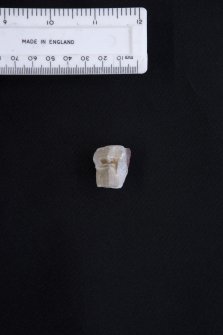

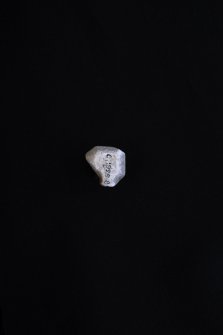
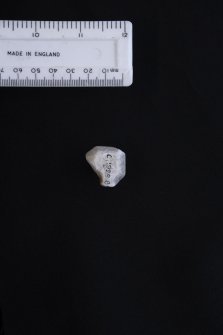

DP 171569
Detail of fragment of composite pillar from corner of tombchest (with scale)
© Crown Copyright: HES


DP 171571
Upper surface of fragment of composite pillar from corner of tombchest
© Crown Copyright: HES

DP 171572
Upper surface of fragment of composite pillar from corner of tombchest (with scale)
© Crown Copyright: HES
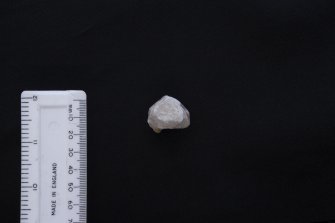
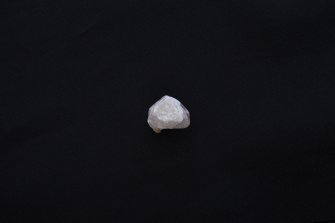
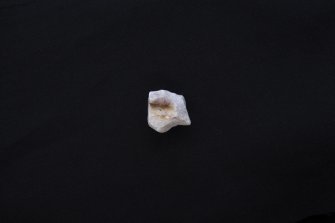
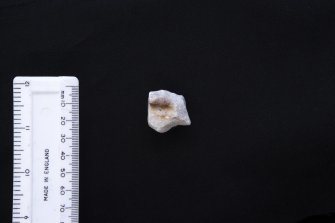

DP 171573
Lower surface of fragment of composite pillar from corner of tombchest (with scale)
© Crown Copyright: HES

DP 171574
Lower surface of fragment of composite pillar from corner of tombchest
© Crown Copyright: HES


DP 171576
Section of fragment of composite pillar from corner of tombchest (with scale)
© Crown Copyright: HES
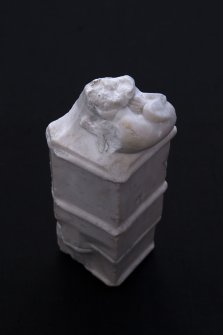
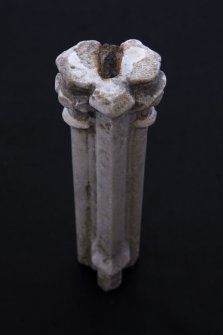
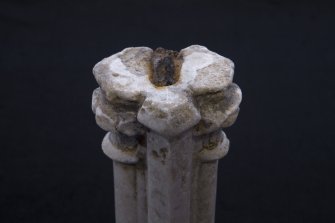
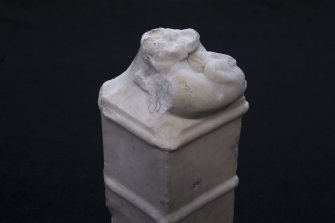




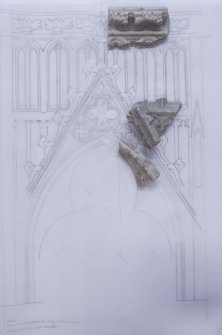
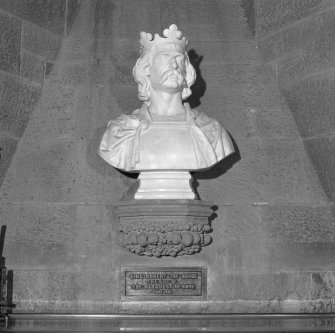
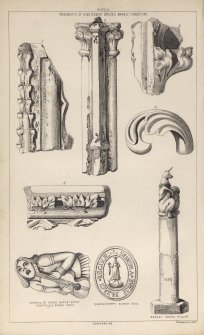
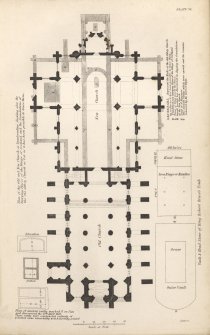

DP 171581
Layout of fragments on early version of reconstruction drawing of the tombchest canopy
© Crown Copyright: HES

SC 1379363
Interior. 2nd. floor, exhibition room, detail of bust of King Robert The Bruce
© Crown Copyright: HES

SC 1424749
Plate ix from P Chalmers, Historical and Statistical Account of Dunfermline, showing 'Fragments of King Robert Bruce's marble tombstone', 'Gurgoil or stone water spout from the old market cross', 'Queensferry Burgh Seal', and 'Market cross pillar'.
© Crown Copyright: HES

SC 1424750
Plate vi from P Chalmers, Historical and Statistical Account of Dunfermline, showing plan of the nave of the Abbey church, the new Parish Church, and the foundations of the medieval choir. Also shown are plans and sections of vaults discovered during excavation, including that attributed to Robert the Bruce.
© Crown Copyright: HES
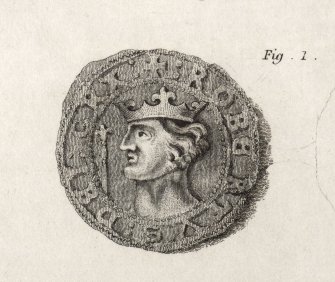
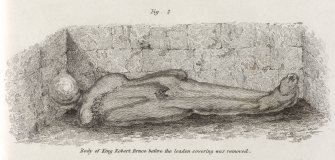
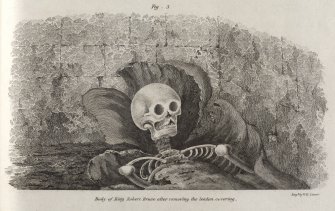
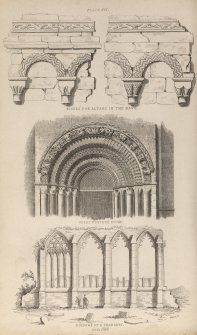

SC 1424751
Figure i from the Report to the King's Remembrancer, showing detail of a coin of Robert I.
© Crown Copyright: HES

SC 1424752
Figure ii from the Report to the King's Remembrancer, showing the lead coffin, identified as that of Robert I.
© Crown Copyright: HES

SC 1424753
Figure iii from the Report to the King's Remembrancer, showing the skeleton and lead coffin, identified as that of Robert I.
© Crown Copyright: HES

SC 1424754
Plate xvi from P Chalmers, Historical and Statistical Account of Dunfermline, showing architectural details of the abbey, including romanesque arcading in the nave, the western door of the nave, and the windows of the north transept, as standing in 1790.
© Crown Copyright: HES
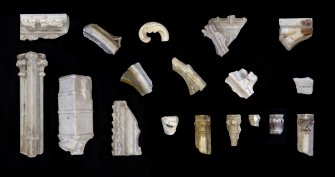
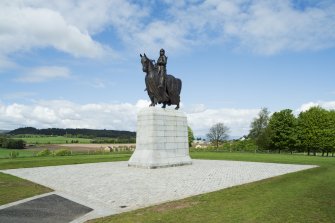

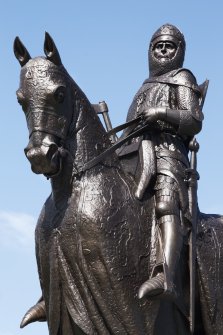

DP 188936
Composite image of marble fragments of the tomb of Robert I (Robert the Bruce), from the collections of the National Museums Scotland, The Hunterian, University of Glasgow, and Dunfermline Museum.
© Crown Copyright: HES




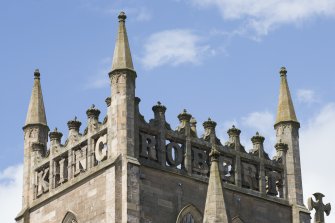
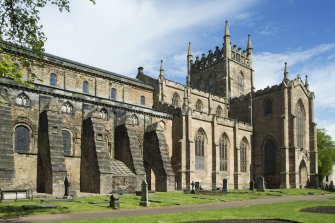
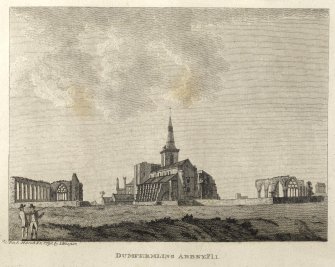

DP 188964
General view of Dunfermline Abbey, looking north west to the Parish Church.
© Crown Copyright: HES


DP 188967
General view of Dunfermline Abbey, looking north east, showing nave and parish church.
© Crown Copyright: HES

SC 1425392
General view of Dunfermline Abbey, showing the ruins of the refectory, the nave, and the ruins of the choir, from the south-east
© Crown Copyright: HES
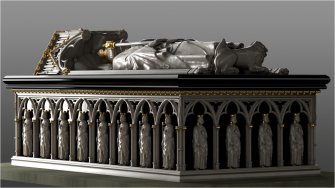
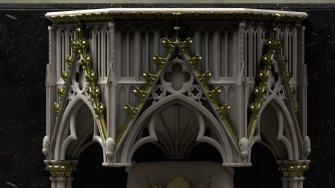
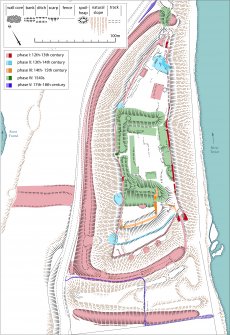
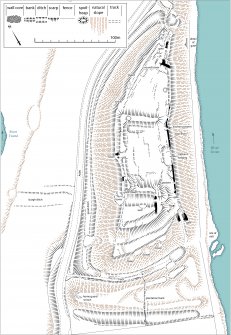
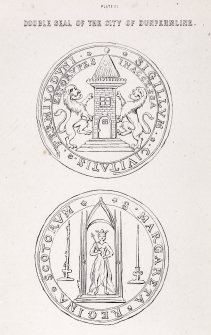
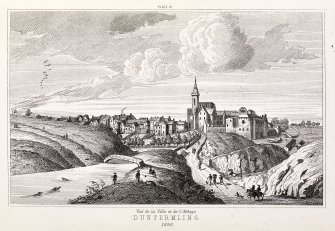
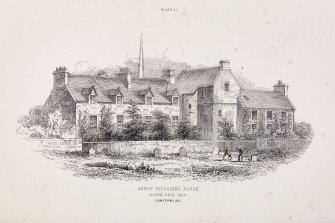

DP 354294
Plate 111 from P Chalmers, 'Historical and Statistical Account of Dunfermline' showing 'Double Seal of the City of Dunfermline' and 'Tabernacle Work of the Abbey Choir 1250'.

DP 354295
Plate 1V from P Chalmers, 'Historical and Statistical Account of Dunfermline' showing view of Dunfermline, '1690'.

DP 354296
Plate XI from P Chalmers, 'Historical and Statistical Account of Dunfermline' showing 'Abbot Pitcairn's House. South side 1856. Dunfermline'.

SC 922937
Interior of Wallace Monument. 2nd. floor, exhibition room, detail of stained glass window
© Crown Copyright: HES

SC 1013784
Oblique aerial view centred on the cropmarks of the Roman Temporary Camp, ring ditch and pits with Strathcathro Parish Church adjacent, looking to the S.
© Ian Ralston. Courtesy of HES

SC 1098074
View of the statue of Robert the Bruce located on the exterior of the National Portrait Gallery, Queen Street.
© Courtesy of HES (William McKelvie Collection)

SC 1104632
View of Alexander III Monument, Kingswoodend, from North West
© Courtesy of HES (Francis M Chrystal Collection)

DP 040241
Oblique aerial view centred on the airfield with the lighthouse adjacent, taken from the W.
© Crown Copyright: HES

DP 043347
Oblique aerial view centred on Dunfermline Abbey with the Abbey Precinct adjacent, taken from the SSE.
© Crown Copyright: HES

DP 064424
Alterations for the National Trust for Scotland. Interior perspective elevations of auditoria. Press cuttings and letter relating to alterations.
© Courtesy of HES. Papers of John L Paterson, architect, Edinburgh, Scotland

SC 1167311
Detail of memorial to Robert Bruce on Gate House
© Courtesy of HES (Scottish Colorfoto Collection)

SC 1168708
View from S of town hall and statue of Robert Bruce, High Street, Lochmaber. Large carts are balanced end on behind the statue.
© Courtesy of HES (William Notman Collection)

DP 078996
General oblique aerial view of the city centred on the Stirling Castle, taken from the NE.
© Crown Copyright: HES

SC 1207608
View of the Wallace Statue under construction with W Grant Stevenson sitting at the base, Aberdeen.
© Courtesy of HES (Scottish Colorfoto Collection)

SC 1212613
View of statues of Robert the Bruce (right) and Old Mortality (left), on upper tier of NE buttress.
© Public Monuments and Sculpture Association (PMSA), Edinburgh Regional Archive. Courtesy of HES

DP 089480
General oblique aerial view of the city centred on the castle, taken from the NE.
© Crown Copyright: HES

DP 094355
Engraving of tomb of Sir James Douglas. Titled: 'Monument of Sir James Douglass in the church of Douglass. Drawn and engraved by Edwd. Blore. Proof.'
© Courtesy of HES. Illustration in Views in Scotland

DP 094376
Engraving of Dunfermline Abbey on skyline with scattered cottages in foreground. Titled: ' View of Dunfermline for the Scots. Mag. & Edinr Lity Misc. pub by A. Constable & Co., 2 April 1810. R. Scott sculpt.'
© Courtesy of HES. Illustration in Views in Scotland

DP 097241
General oblique aerial view of Brechin Castle estate, centred on Brechin Castle, taken from the W.
© Crown Copyright: HES

DP 102160
Pl.44 Perth. Copy of copper plate engraving titled 'Prospectus Civitatis Perthi The prospect of ye town of Perth. This plate is most humbly inscribed to His Grace John, Duke of Argyle etc.'
© Courtesy of HES. Illustration from Theatrum Scotiae by J Sleezer

DP 102163
View of Stirling Castle. Copy of copper plate engraving titled 'The prospect of Sterling Castle.'
© Courtesy of HES. Illustration from Theatrum Scotiae by J Sleezer

DP 106930
Interior view of Dunfermline Abbey. Titled 'Bruces's Grave Dunfermline Abbey' PHOTOGRAPH ALBUM NO:11 KIRSTY'S BANFF ALBUM

DP 107406
Oblique aerial view of Bannockburn Heritage Centre, taken from the NNE.
© Crown Copyright: HES

DP 146782
View of the Bannockburn Heritage Centre, taken from the west north west
© Crown Copyright: HES

DP 171430
Top view of composite pillar from corner of tombchest, showing iron pin (with scale)
© Crown Copyright: HES

DP 171431
Top view of composite pillar from corner of tombchest, showing iron pin
© Crown Copyright: HES

DP 171432
View from below of composite pillar from corner of tombchest, showing fracture
© Crown Copyright: HES

DP 171433
View from below of composite pillar from corner of tombchest, showing fracture (with scale)
© Crown Copyright: HES

DP 171434
View of reverse of composite pillar from corner of tombchest, showing rebate
© Crown Copyright: HES

DP 171435
View of reverse of composite pillar from corner of tombchest, showing rebate (with scale)
© Crown Copyright: HES

DP 171440
View of reverse of corbel from the tombchest canopy, showing iron pin
© Crown Copyright: HES

DP 171441
View of reverse of corbel from the tombchest canopy, showing iron pin (with scale)
© Crown Copyright: HES

DP 171445
View of upper surface of corbel from the tombchest canopy, showing pin socket
© Crown Copyright: HES

DP 171446
View of upper surface of corbel from the tombchest canopy, showing pin socket (with scale)
© Crown Copyright: HES

DP 171450
Detail of reverse of fragment of finial and trefoil from tombchest (with scale)
© Crown Copyright: HES

DP 171453
Detail of lower surface of finial and trefoil fragment, showing fracture (with scale)
© Crown Copyright: HES

DP 171454
Detail of lower surface of finial and trefoil fragment, showing fracture
© Crown Copyright: HES

DP 171455
Detail of upper surface of finial and trefoil fragment, showing socket for iron pin
© Crown Copyright: HES

DP 171456
Detail of upper surface of finial and trefoil fragment, showing socket for iron pin (with scale)
© Crown Copyright: HES

DP 171470
Detail of lower surface of colonette from tombchest arcade (with scale)
© Crown Copyright: HES

DP 171471
Fragment of gablet from tombchest canopy, bearing crocket and edge of roundel
© Crown Copyright: HES

DP 171472
Fragment of gablet from tombchest canopy, bearing crocket and edge of roundel (with scale)
© Crown Copyright: HES

DP 171485
Edge of apex of tombchest arcade, showing remains of iron pin (with scale)
© Crown Copyright: HES

DP 171488
Fragment of capital from composite corner pillar of tombchest (with scale)
© Crown Copyright: HES

DP 171489
Reverse of fragment of capital from composite corner pillar of tombchest
© Crown Copyright: HES

DP 171490
Reverse of fragment of capital from composite corner pillar of tombchest (with scale)
© Crown Copyright: HES

DP 171491
Lower surface of fragment of capital from composite corner pillar of tombchest (with scale)
© Crown Copyright: HES

DP 171492
Lower surface of fragment of capital from composite corner pillar of tombchest
© Crown Copyright: HES

DP 171493
Lower surface of fragment of capital from composite corner pillar of tombchest
© Crown Copyright: HES

DP 171494
Lower surface of fragment of capital from composite corner pillar of tombchest (with scale)
© Crown Copyright: HES

DP 171513
Detail of lower surface of colonette from tombchest arcade (with scale)
© Crown Copyright: HES

DP 171516
Detail of upper surface of colonette from tombchest arcade (with scale)
© Crown Copyright: HES

DP 171521
Fragment of gablet, bearing lower edge of arcading, stump of a crocket, and part of roundel.
© Crown Copyright: HES

DP 171522
Fragment of gablet, bearing lower edge of arcading, stump of a crocket, and part of roundel (with scale)
© Crown Copyright: HES

DP 171523
Reverse of fragment of gablet, bearing lower edge of arcading and part of roundel.
© Crown Copyright: HES

DP 171524
Reverse of fragment of gablet, bearing lower edge of arcading and part of roundel (with scale)
© Crown Copyright: HES

DP 171533
Reverse of fragment of cusped arch from tombchest arcade (with scale)
© Crown Copyright: HES

DP 171538
Detail of section of fragment of cusped arch from tombchest arcade (with scale)
© Crown Copyright: HES

DP 171541
Reverse of fragment of cusped arch from tombchest arcade (with scale)
© Crown Copyright: HES

DP 171544
Section of fragment of cusped arch from tombchest arcade (with scale)
© Crown Copyright: HES

DP 171545
Section of fragment of cusped arch from tombchest arcade (with scale)
© Crown Copyright: HES

DP 171546
Section of fragment of cusped arch from tombchest arcade (with scale)
© Crown Copyright: HES

DP 171561
View of upper face of capital of colonette from tombchest arcade (with scale)
© Crown Copyright: HES

DP 171562
View of upper face of capital of colonette from tombchest arcade (with scale)
© Crown Copyright: HES

DP 171564
View of upper face of capital of colonette from tombchest arcade (with scale)
© Crown Copyright: HES

DP 171565
Detail of fragment of composite pillar from corner of tombchest (with scale)
© Crown Copyright: HES

DP 171568
Detail of fragment of composite pillar from corner of tombchest (with scale)
© Crown Copyright: HES

DP 171569
Detail of fragment of composite pillar from corner of tombchest (with scale)
© Crown Copyright: HES

DP 171571
Upper surface of fragment of composite pillar from corner of tombchest
© Crown Copyright: HES

DP 171572
Upper surface of fragment of composite pillar from corner of tombchest (with scale)
© Crown Copyright: HES

DP 171573
Lower surface of fragment of composite pillar from corner of tombchest (with scale)
© Crown Copyright: HES

DP 171574
Lower surface of fragment of composite pillar from corner of tombchest
© Crown Copyright: HES

DP 171576
Section of fragment of composite pillar from corner of tombchest (with scale)
© Crown Copyright: HES

DP 171581
Layout of fragments on early version of reconstruction drawing of the tombchest canopy
© Crown Copyright: HES

SC 1379363
Interior. 2nd. floor, exhibition room, detail of bust of King Robert The Bruce
© Crown Copyright: HES

SC 1424749
Plate ix from P Chalmers, Historical and Statistical Account of Dunfermline, showing 'Fragments of King Robert Bruce's marble tombstone', 'Gurgoil or stone water spout from the old market cross', 'Queensferry Burgh Seal', and 'Market cross pillar'.
© Crown Copyright: HES

SC 1424750
Plate vi from P Chalmers, Historical and Statistical Account of Dunfermline, showing plan of the nave of the Abbey church, the new Parish Church, and the foundations of the medieval choir. Also shown are plans and sections of vaults discovered during excavation, including that attributed to Robert the Bruce.
© Crown Copyright: HES

SC 1424751
Figure i from the Report to the King's Remembrancer, showing detail of a coin of Robert I.
© Crown Copyright: HES

SC 1424752
Figure ii from the Report to the King's Remembrancer, showing the lead coffin, identified as that of Robert I.
© Crown Copyright: HES

SC 1424753
Figure iii from the Report to the King's Remembrancer, showing the skeleton and lead coffin, identified as that of Robert I.
© Crown Copyright: HES

SC 1424754
Plate xvi from P Chalmers, Historical and Statistical Account of Dunfermline, showing architectural details of the abbey, including romanesque arcading in the nave, the western door of the nave, and the windows of the north transept, as standing in 1790.
© Crown Copyright: HES

DP 188936
Composite image of marble fragments of the tomb of Robert I (Robert the Bruce), from the collections of the National Museums Scotland, The Hunterian, University of Glasgow, and Dunfermline Museum.
© Crown Copyright: HES

DP 188964
General view of Dunfermline Abbey, looking north west to the Parish Church.
© Crown Copyright: HES

DP 188967
General view of Dunfermline Abbey, looking north east, showing nave and parish church.
© Crown Copyright: HES

SC 1425392
General view of Dunfermline Abbey, showing the ruins of the refectory, the nave, and the ruins of the choir, from the south-east
© Crown Copyright: HES

DP 203398
General view of digital reconstruction of the tomb of Robert the Bruce
© Crown Copyright: HES

DP 203399
Detail of digital reconstruction of the canopy of the tomb of Robert the Bruce
© Crown Copyright: HES

DP 354294
Plate 111 from P Chalmers, 'Historical and Statistical Account of Dunfermline' showing 'Double Seal of the City of Dunfermline' and 'Tabernacle Work of the Abbey Choir 1250'.

DP 354295
Plate 1V from P Chalmers, 'Historical and Statistical Account of Dunfermline' showing view of Dunfermline, '1690'.

DP 354296
Plate XI from P Chalmers, 'Historical and Statistical Account of Dunfermline' showing 'Abbot Pitcairn's House. South side 1856. Dunfermline'.
































































